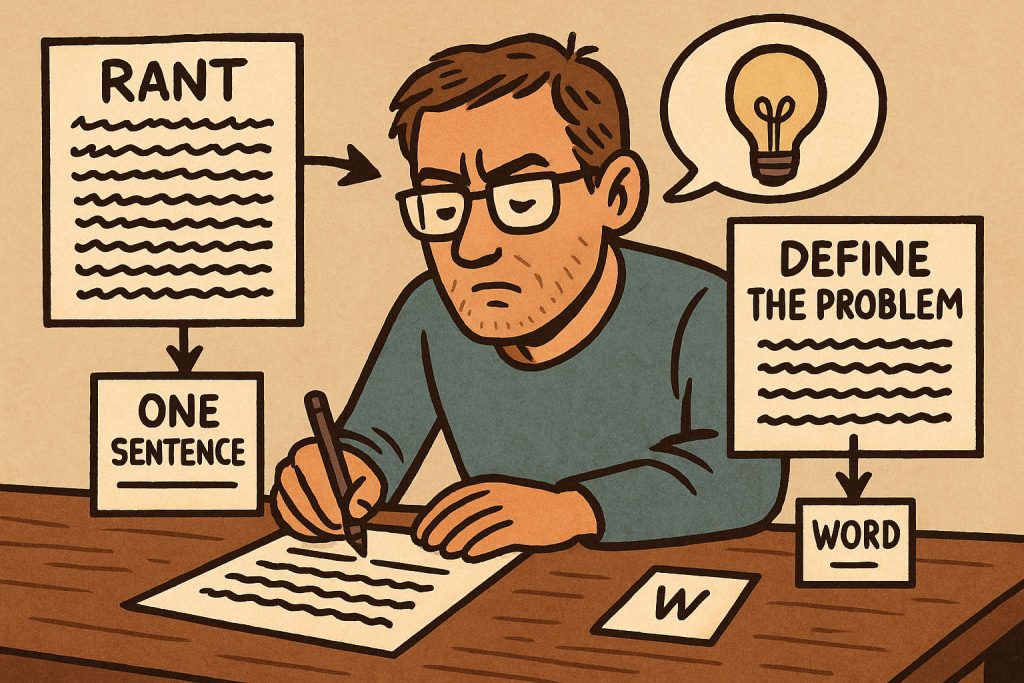
This sounds simple. But it’s one of the hardest skills to build when starting out.
Most of us don’t define problems—we describe symptoms. We rant. We spiral. We unload all the frustration onto the page or into a meeting. But we rarely stop to ask: What exactly is the real problem here?
I call this stage the “spill.” It’s the motion of dialogue or thought vomiting forth. You write, you speak, you pace. You get it all out—pages of what’s happening, what feels wrong, what’s broken.
That’s good. Let it spill.
But then, you must shape it.
Step One: Shrink it to a paragraph.
Step Two: Shrink it to 2–3 sentences.
Step Three: Shrink it to one sentence—a complete thought that identifies the root cause.
Not the noise.
Not the narrative.
But the core problem.
Still want a challenge? Try going further.
Step Four: Shrink it to one word.
- Churn.
- Misalignment.
- Overload.
- Drift.
When you can name the problem in one word, you’ve achieved conceptual clarity.
That’s when real solutions start to show up. Not from a place of reaction—but from structure. From awareness.
You don’t just “have a problem” anymore.
You know what it is. You’ve named it. You can shape it.
And from there—real movement begins.

Leave a Reply